Valencia's original dish contains only ten basic ingredients, and they are not what everyone thinks: chicken, rabbit, green bean, locust bean, tomato, rice, olive oil, water, saffron and salt.
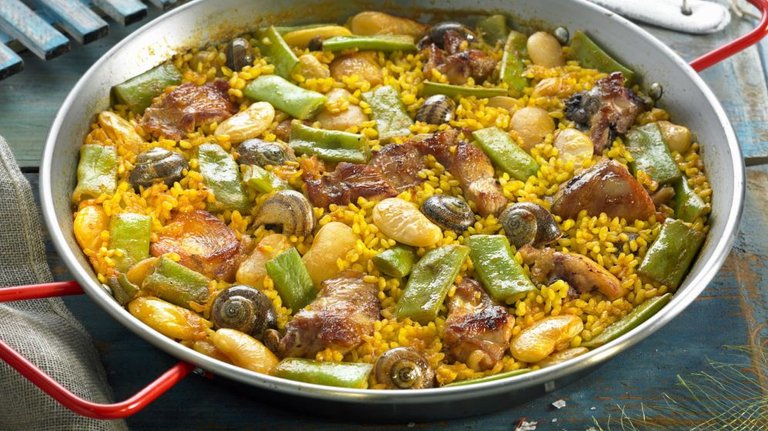
According to the dictionary of the Royal Spanish Academy, paella is "a dish of dry rice, with meat, fish, seafood, legumes, etc., characteristic of the Valencian region in Spain", in addition to being the "frying pan" in which it is made. But if we speak strictly of the "paella valenciana" the definition narrows a barbarity.
For the Regulatory Council of the Designation of Origin "Arroz de Valencia", Valencian paella can only be marketed under this name if it contains the ten basic ingredients of its traditional preparation: chicken, rabbit, green beans, locust bean, tomato, rice, olive oil, water, saffron and salt. In addition, depending on the region, other ingredients such as garlic, artichoke, duck, paprika, snails or rosemary are also allowed. No more, no less.
First surprise for the neophytes of the crazy world of Levantine rice: in its traditional Valencian version, paella is a dish from the countryside, not from the sea. The paella mixta, in which meat and fish are mixed, is undoubtedly the most popular beyond our borders, but it is a recent invention despised by Valencians. And let's not say if this one has ingredients like peas, onion, chorizo...
Of course, there are many other rice dishes in the Valencian Community. And we can say, even knowing that this is a controversial statement, that Valencia and Alicante compete on an equal footing as regards the excellence of their preparations. But "paella valenciana" in quotation marks and being strict there is only one.
A Brief history of our Paella
Rivers of ink have been written about the origin of paella and, despite this, it is impossible to trace its specific origin. Naturally, its appearance is closely linked to the popularization of rice as a crop, which should not have spread along the Levantine coast until the arrival of the Arabs (who had it as one of the pillars of their diet) and also improved irrigation systems created by the Romans along the Mediterranean coast.
With the progressive expulsion of the Arabs from the Iberian Peninsula, rice cultivation also declined. There are quite a number of laws enacted by the kings of the Crown of Aragon aimed at prohibiting the planting and harvesting of this food considered to be typical of the Moors, but in some rural areas of Valencia continued to be an important part of the diet and, little by little, its cultivation was re-emerging and its development was sophisticated.
It seems that throughout the Modern Age rice dishes spread throughout much of Spain (including places as remote as Zamora) but it was not until the 18th century, coinciding with a spectacular increase in rice production, when paella - although still without that name - began to appear in recipes and travelers chronicles. Only in the 19th century should the dish as we know it today.
The traditional recipe
As with most popular dishes, there is no single recipe for paella, although there are a few rules to bring the dish as close as possible to excellence.
The first is to have a large paella, which allows the rice to be cooked evenly over its entire surface. This is the first big problem that arises when trying to make the dish at home: in order to make it look good, the amount of rice should not be much larger than the finger thickness, so to make, for example, a paella for six people we will need a container of about half a metre in diameter. This makes it impossible to cook a good paella using a normal gas cooker.
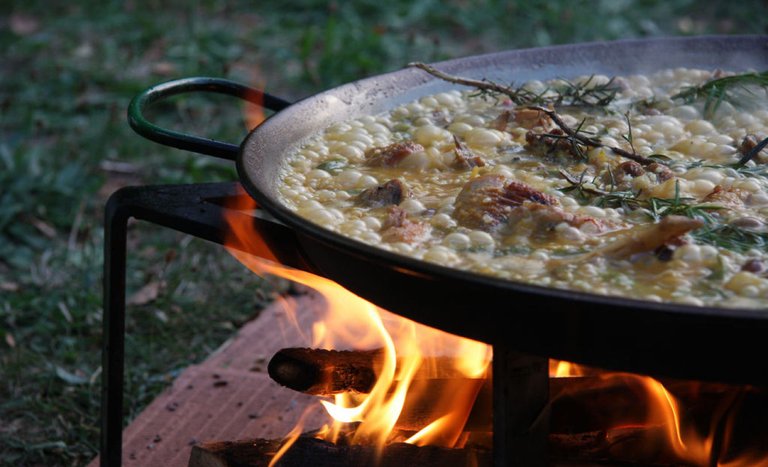
Traditionally, paella is made with wood firewood, but considering that most people no longer have homes at home (or a good garden) the urban alternative is to get a butane bottle and a burner for paellas. If you want to prepare the dish well, it is an inexpensive investment that makes the difference.
The second important rule is to get the water/rice ratio right. It is useful to add three times the volume of water than of rice, but this is a rule that can vary depending on the variety we use. As with pasta, rice producers report in the right proportion packages, which we should try to follow.
Ingredients for 6 people
- 600 grams of rice
- Half poultry chicken (it is important to be good, as the flavour of the broth varies notably)
- Half a small rabbit (important including head and livers)
- 250 grams of bachoqueta mixture (flat green bean)
- 250 grams of "garrofó" (white bean, large and flat)
- 1 large can of crushed tomatoes (also great with concentrated tomatoes)
- 1 tablespoon sweet paprika
- Saffron
- 250 grams of snails
- Four artichokes
- Salt
- Virgin olive oil
- Water
Preparation
1. The fried (Sofrito)
First cut all the ingredients into pieces. Chicken and rabbit as for a stew (you can ask the butcher to prepare it), green beans without strings and in pieces of two or three centimeters and artichokes well cleaned and in halves or quarters according to their size.
In the paella and over medium heat, add plenty of olive oil and fry the chicken, rabbit, green beans, artichokes, snails and garrofó (these last three ingredients are optional, although highly recommended). Season well and add the paprika when the meat is well browned, taking care that it does not burn. Immediately afterwards, add the crushed tomatoes and let the sofrito fry well.
2. The broth (Caldo)
When the sofrito is ready add the water (of time) in an approximate proportion of three to one with respect to the rice. Calculating the right size is the hardest part, but it's better to fall short than to overshoot because we can always add some more water if we see that the rice is too dry and hasn't been made yet. This may be sacrilegious for paella experts, but it's the only way to get the hang of it.
Once the water has been poured, let the broth be cooked over medium-high heat for about half an hour. Just before the rice is poured in, it's a good time to add the saffron or, if you don't have it, a saffron paella seasoning with saffron, which is much cheaper (again an unorthodox advice, but it works). It is worth trying the broth to find out if it is tasty enough and correct it.
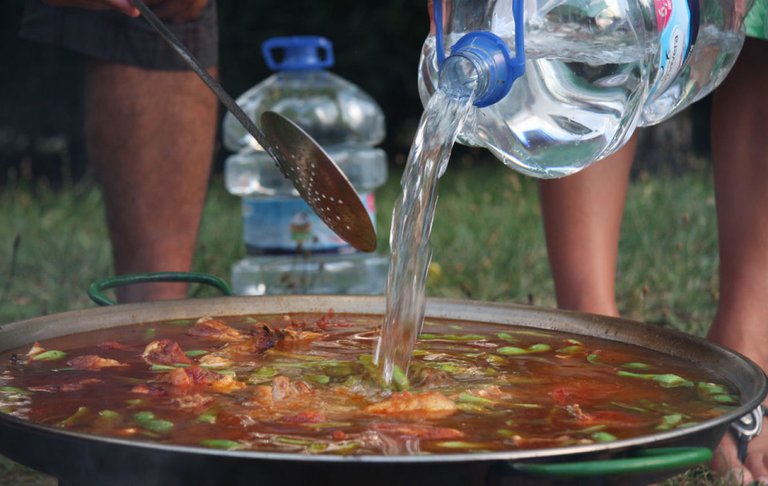
3. The rice (El Arroz)
Once the broth is ready, distribute the rice evenly over the paella. Tradition has it added by adding it forming a diagonal line ("in easel") from one end of the paella to the other to then distribute it, but the truth is that if your pure brother-in-law is not present you can add it as you wish. Now comes the delicate part. The rice will take between 15 and 20 minutes to make, but the time is marked by the grain itself and the power of the fire. The important thing is that all the water is consumed just when the rice is at its perfect point, leaving it completely dry and loose.
If you are a newcomer, it is recommended that you have boiling water on hand to add a saucepan if you run out of broth and the rice is still hard. In the middle of the cooking we can also put a sprig of rosemary, which we will remove before serving. Don't even think about stirring the rice; there's nothing more annoying to a Valencian.
4. The socarrat
There is a trick to achieve a good' socarrat' in gas burners similar to the one you get cooking with wood. Just before removing the paella, when the rice is at its point and the water has been consumed, you should squirt oil on the paella and raise the heat to the maximum for a little less than a minute. The oil will drop to the bottom of the paella pan and toast the rice.
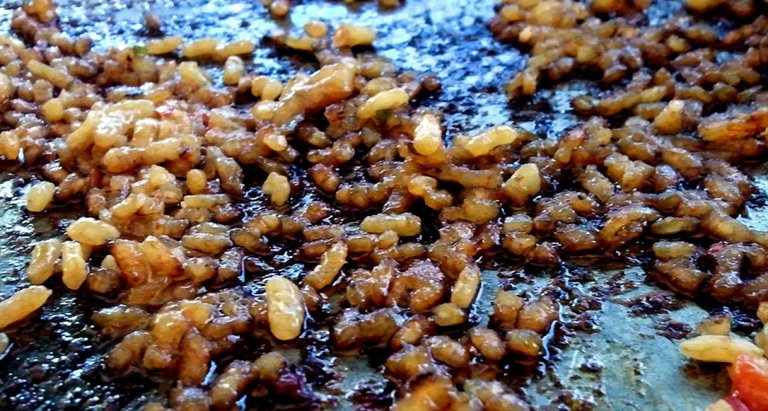
5. The Rest. ("Reposado")
When you have extinguished the fire, it is important to let the paella rest for about five minutes, covered with a large cloth or newspaper (this is what Valencians always use). And now, enjoy yourselves.
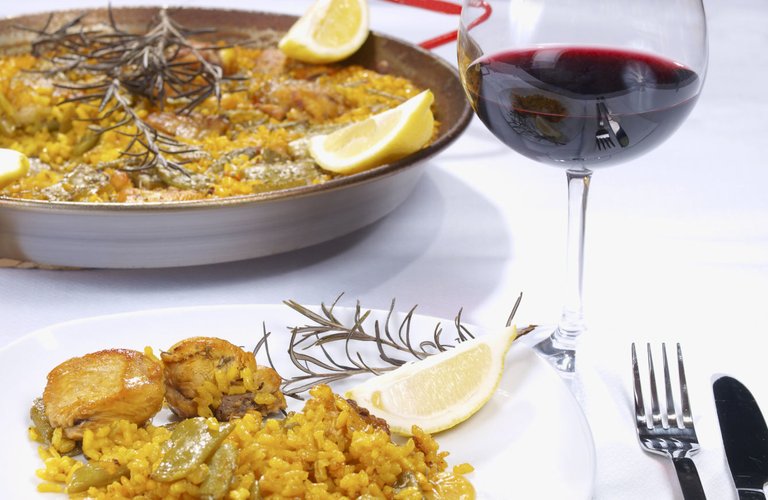
Hi my best food this is awsome post nice pic good recipe very cool thank you happy eaten to you 😚
I don't think I've ever really knowingly had paella 🥘 but looks good !!! Nice post
AJ picked your post @allrecipes for his #TOP5 FOOD POST. Visit AJ's FOOD ROUNDUP to view where your post is ranked.

Looks really delicious!